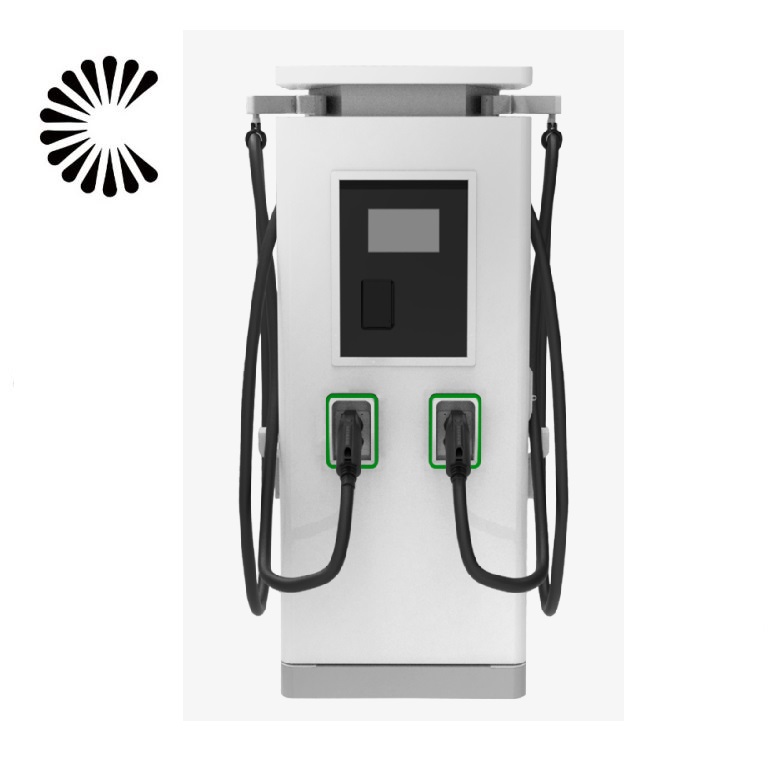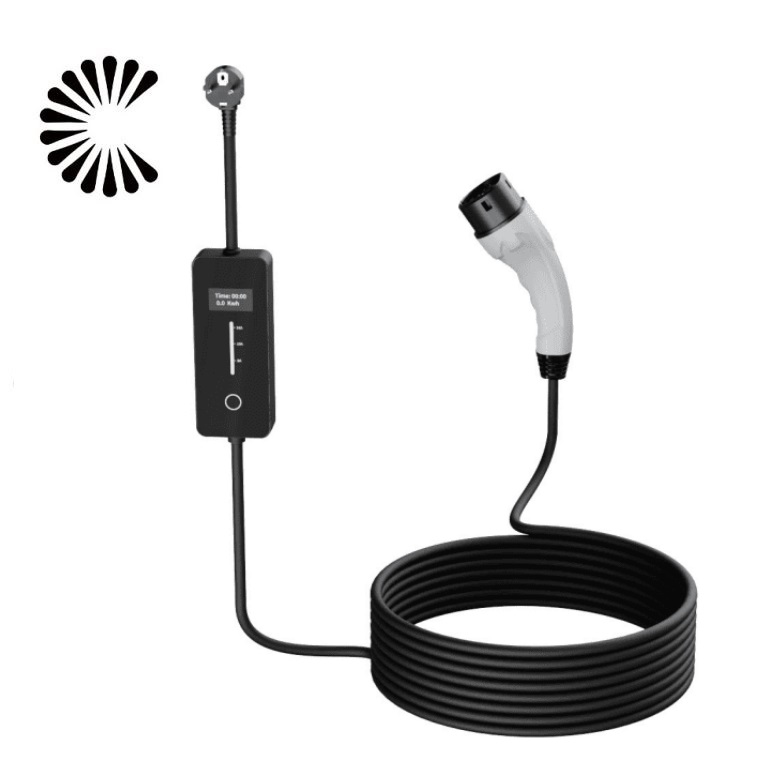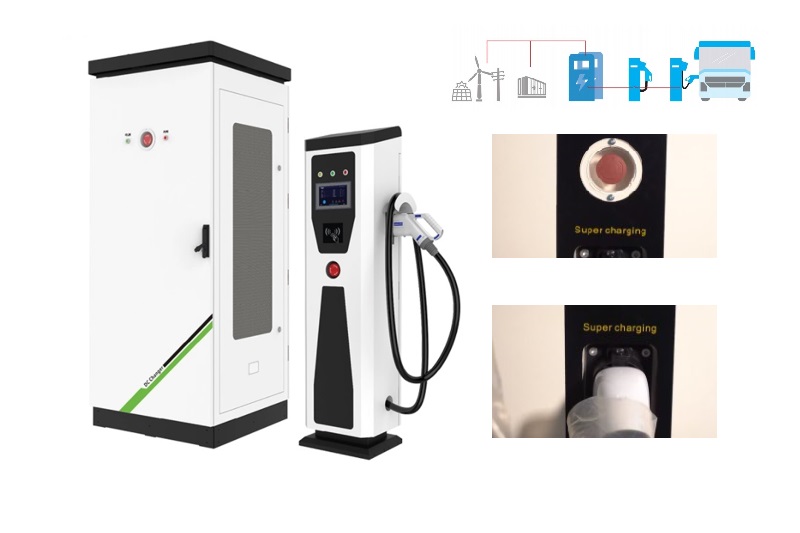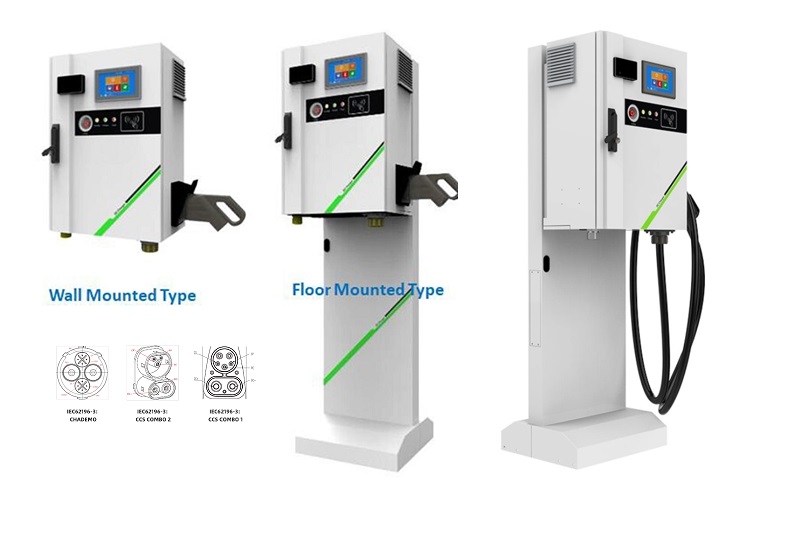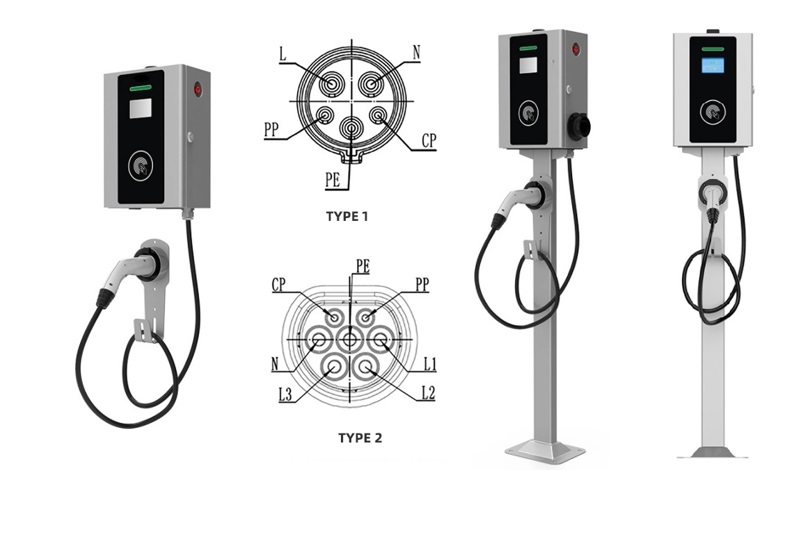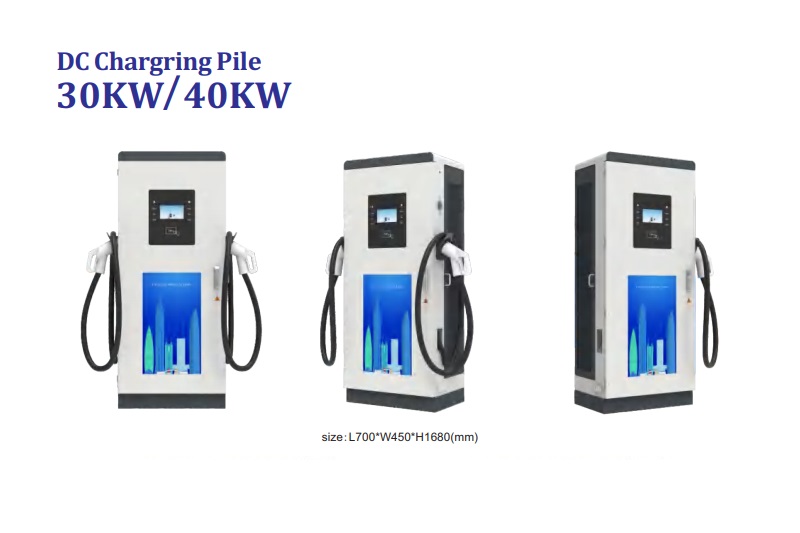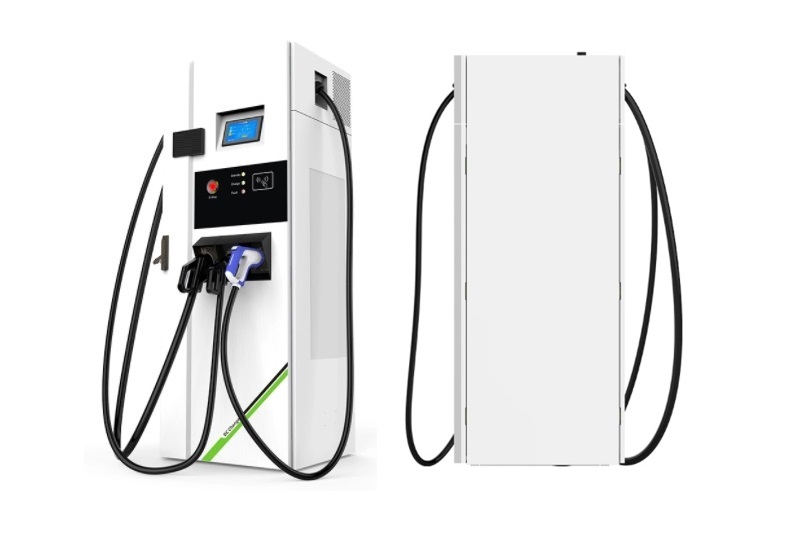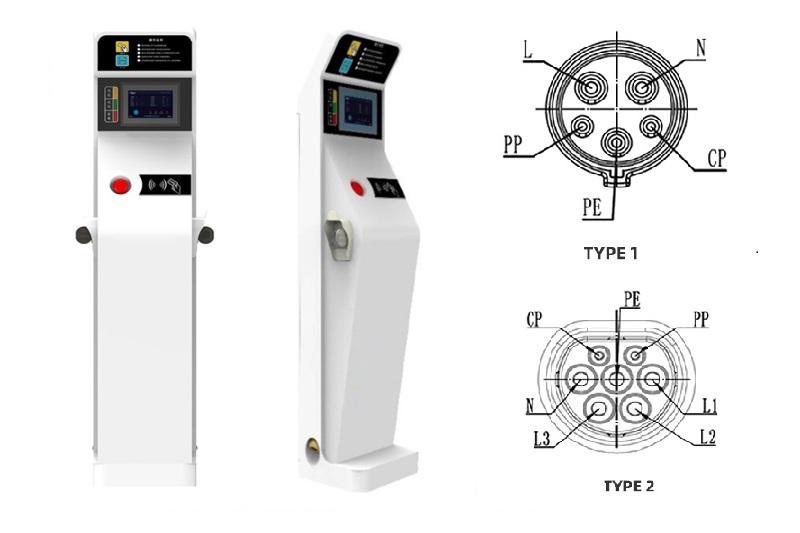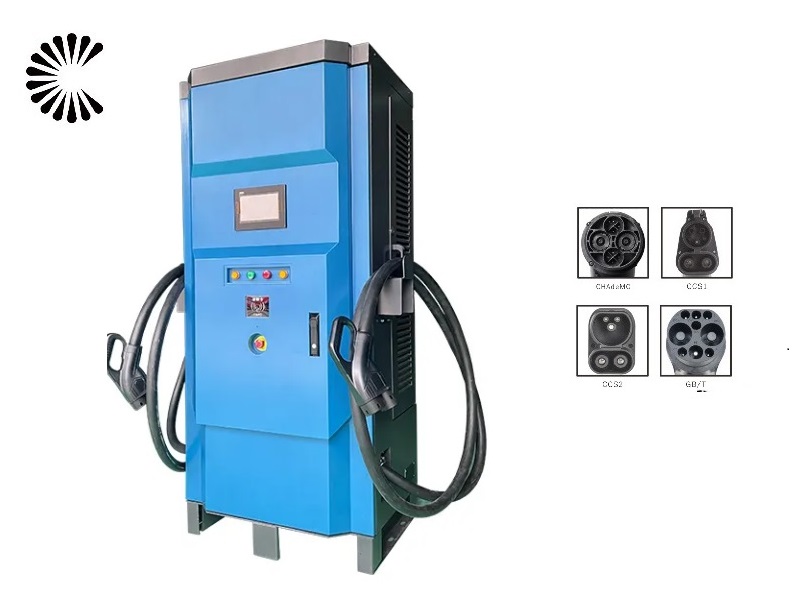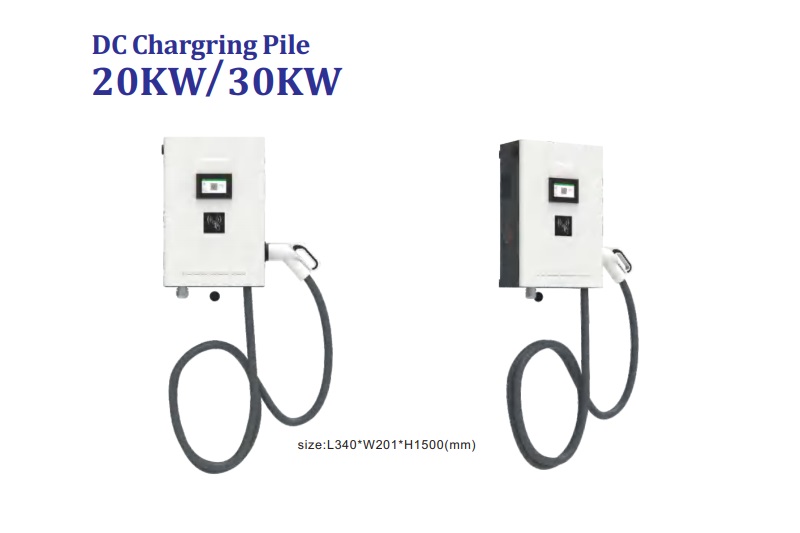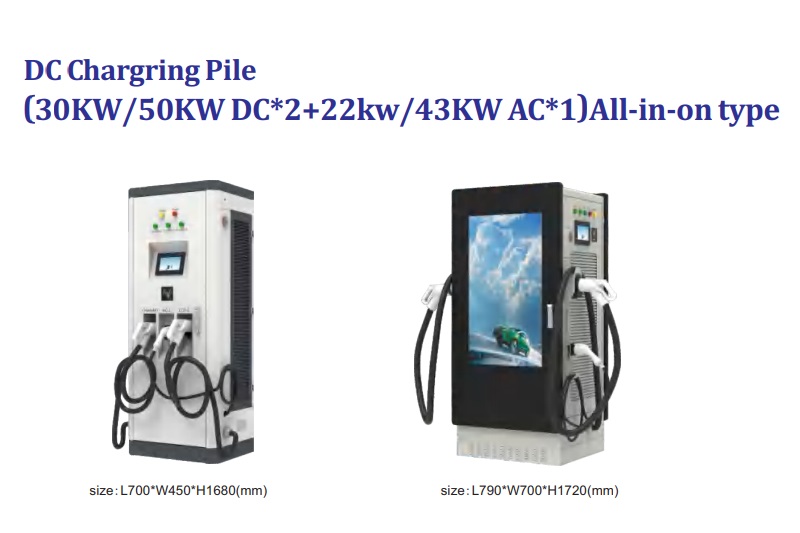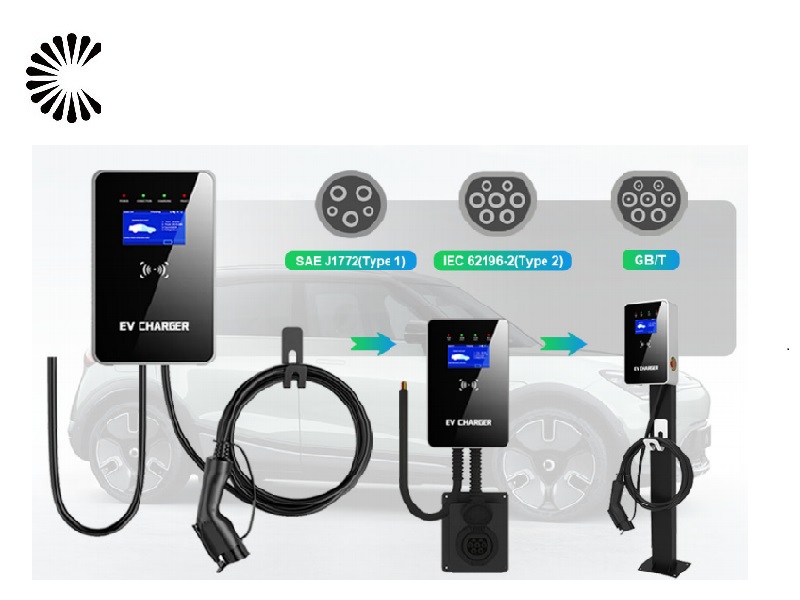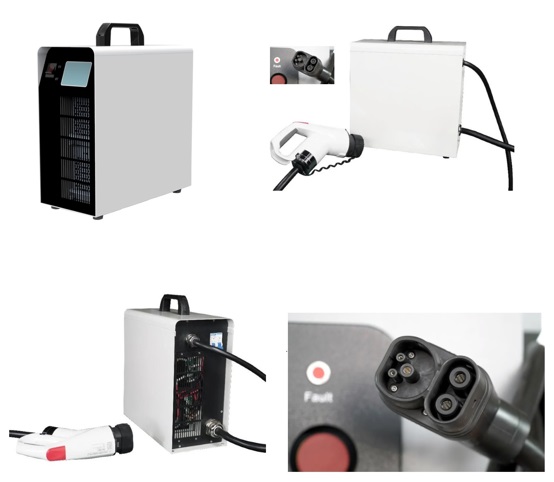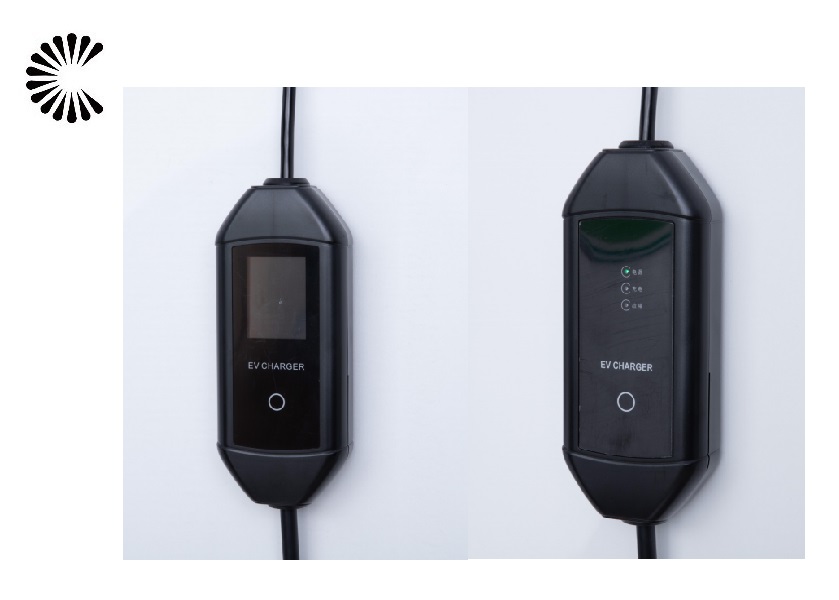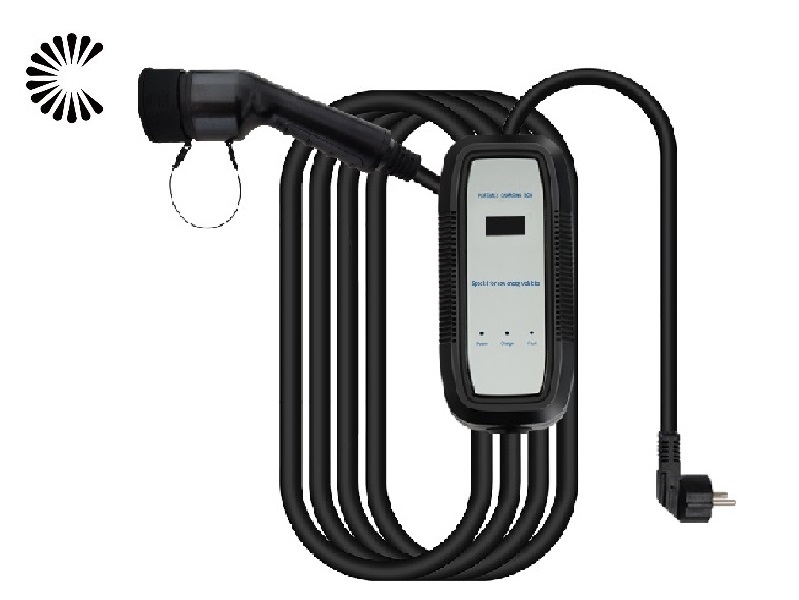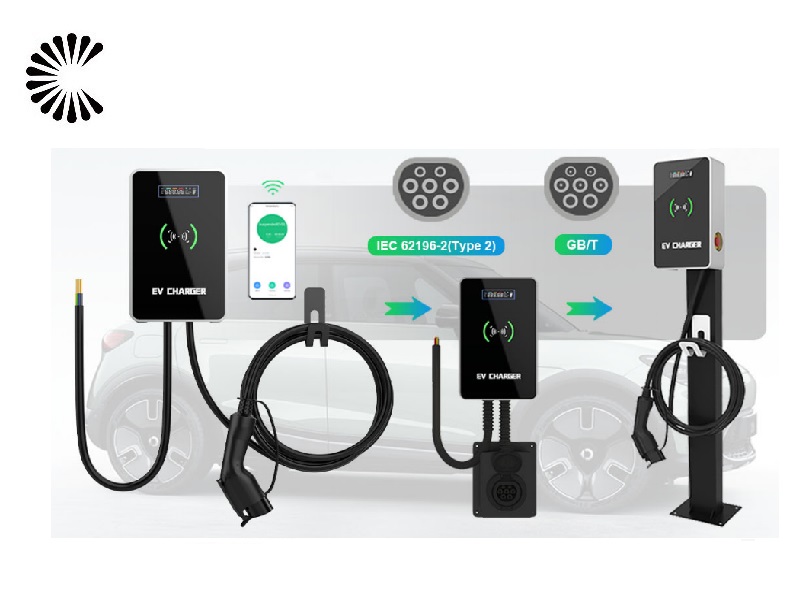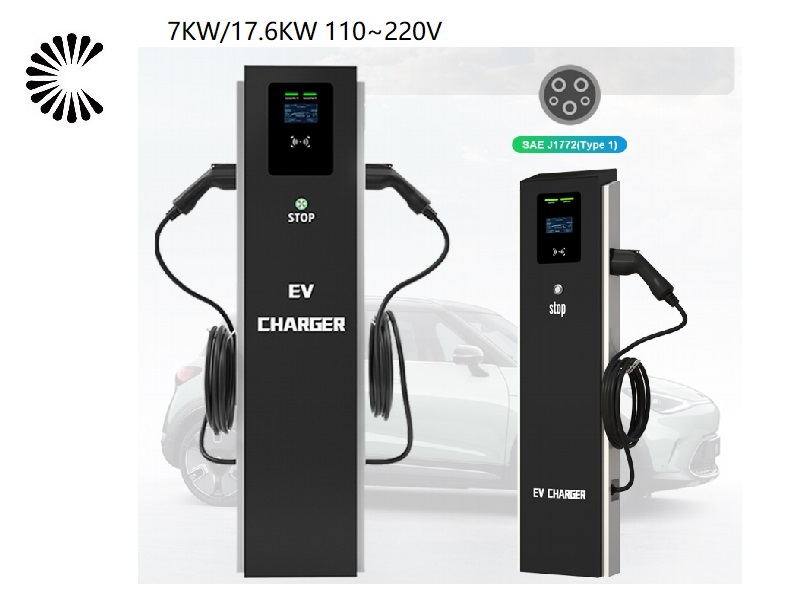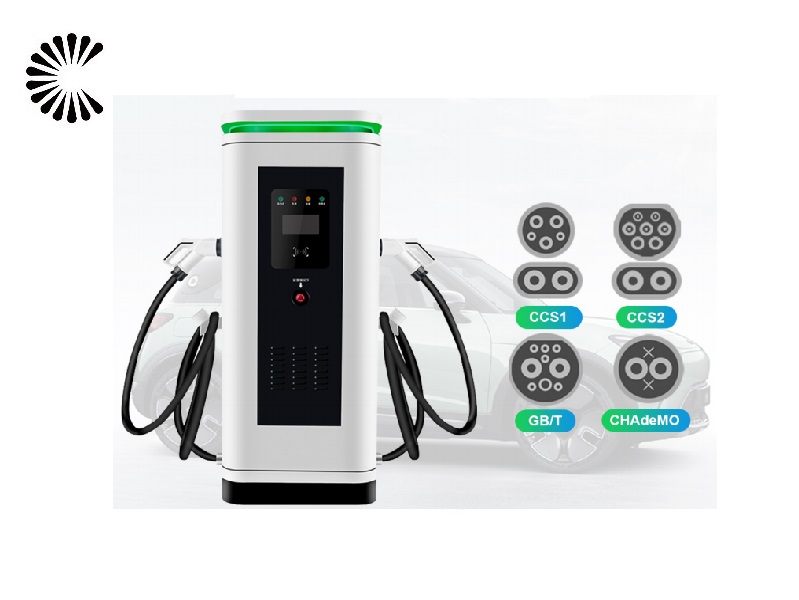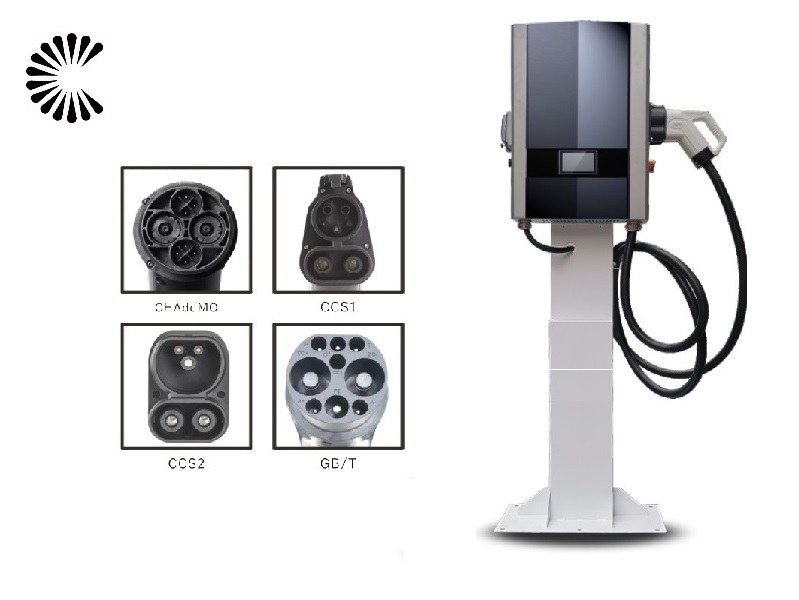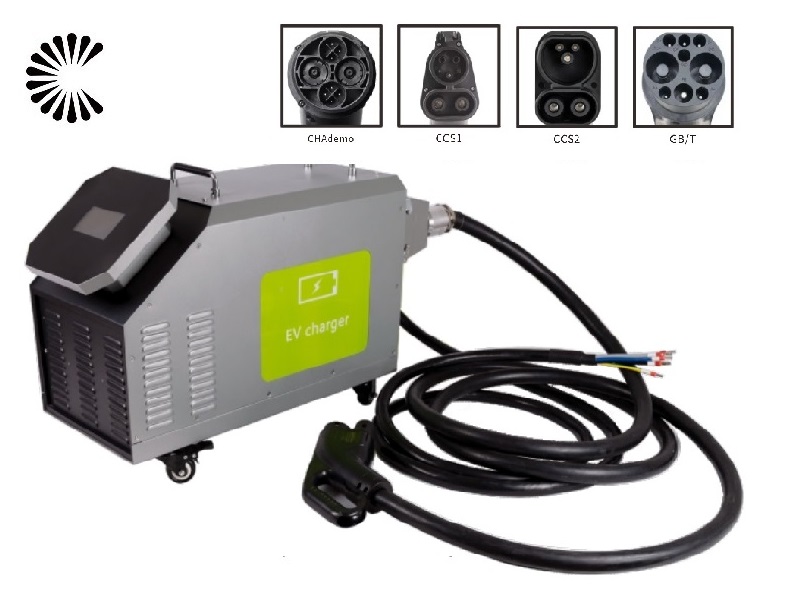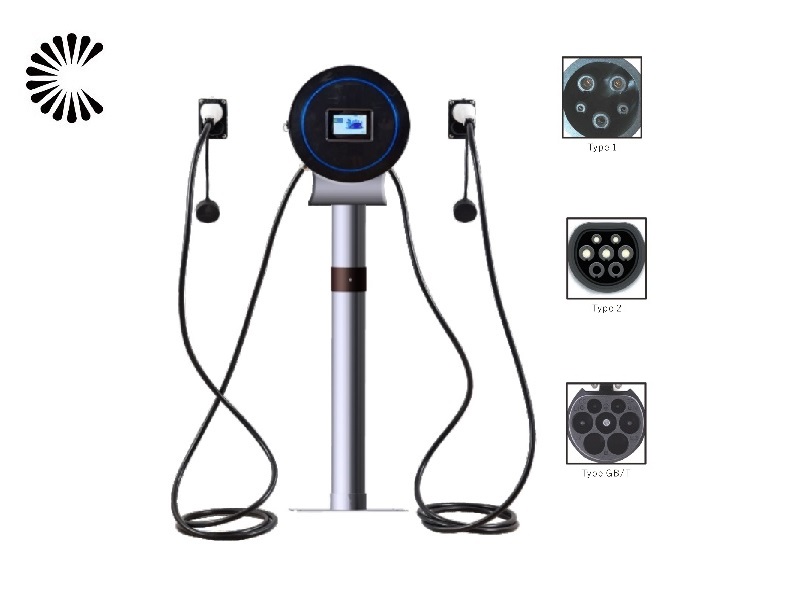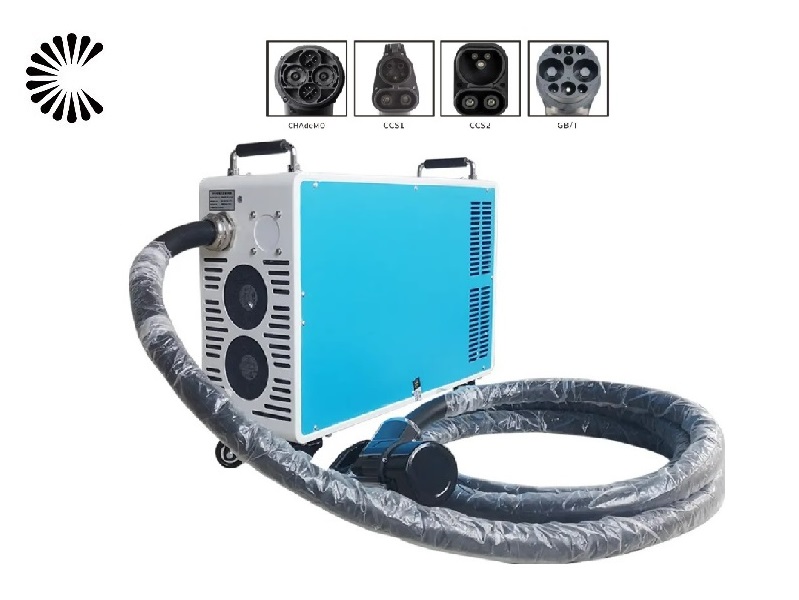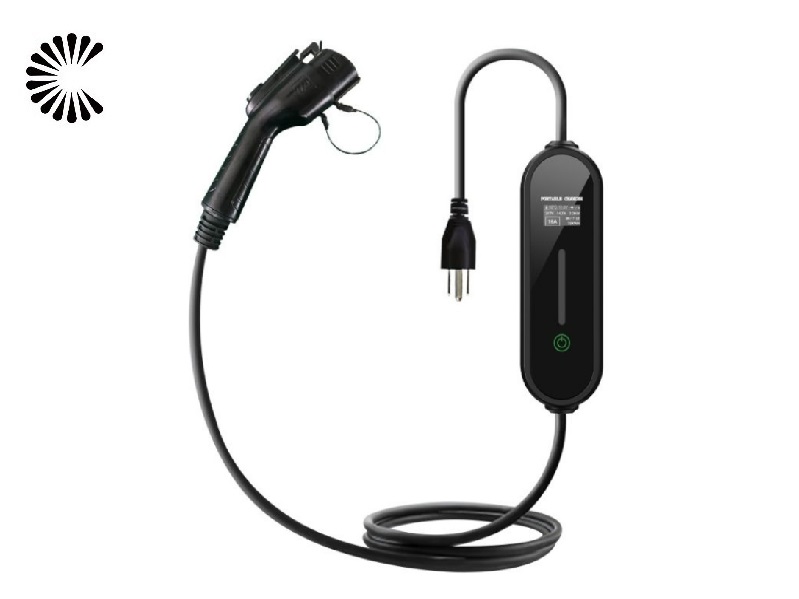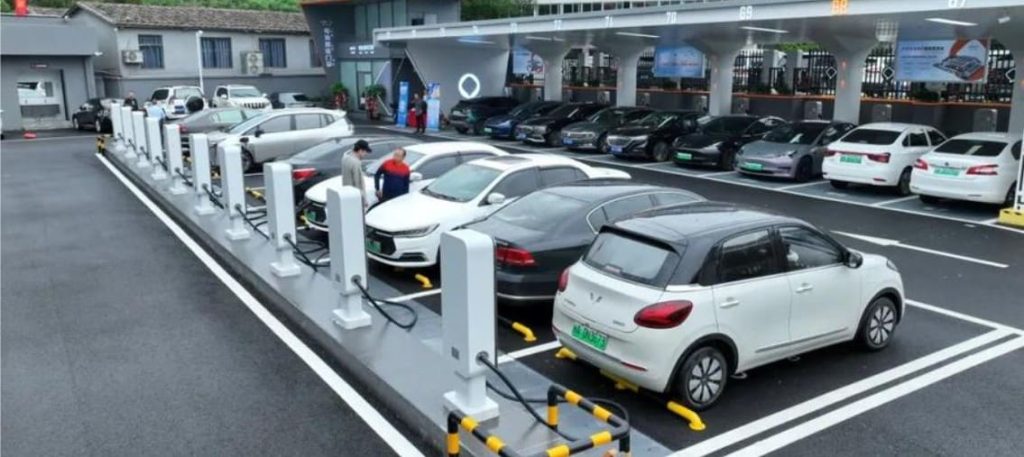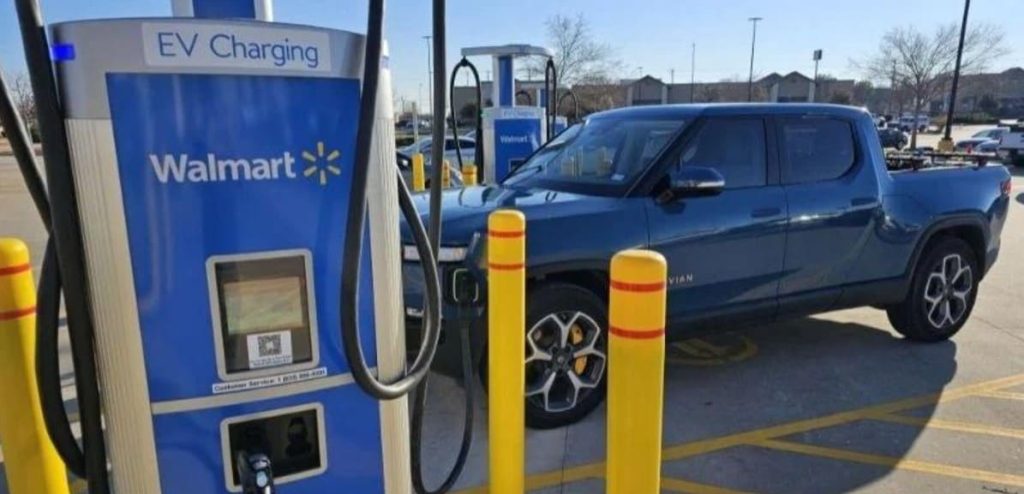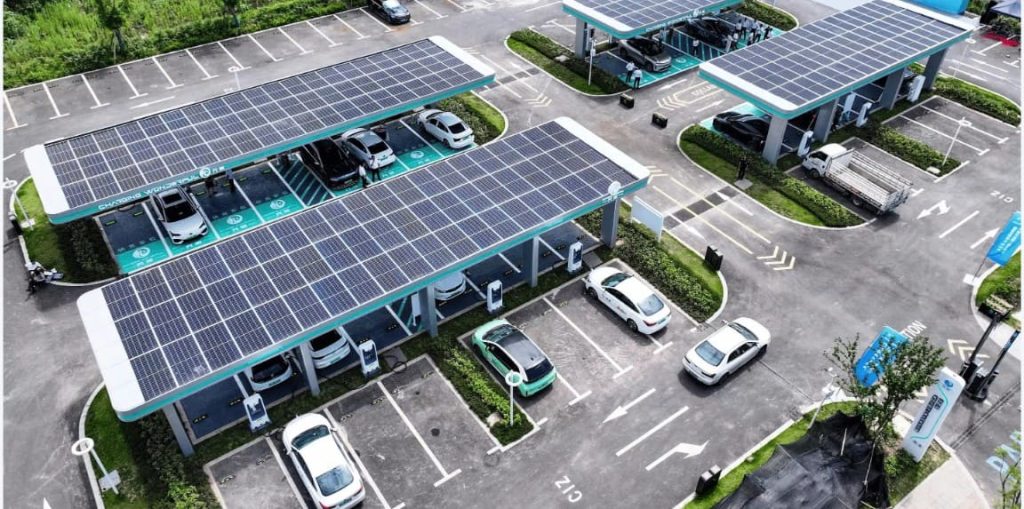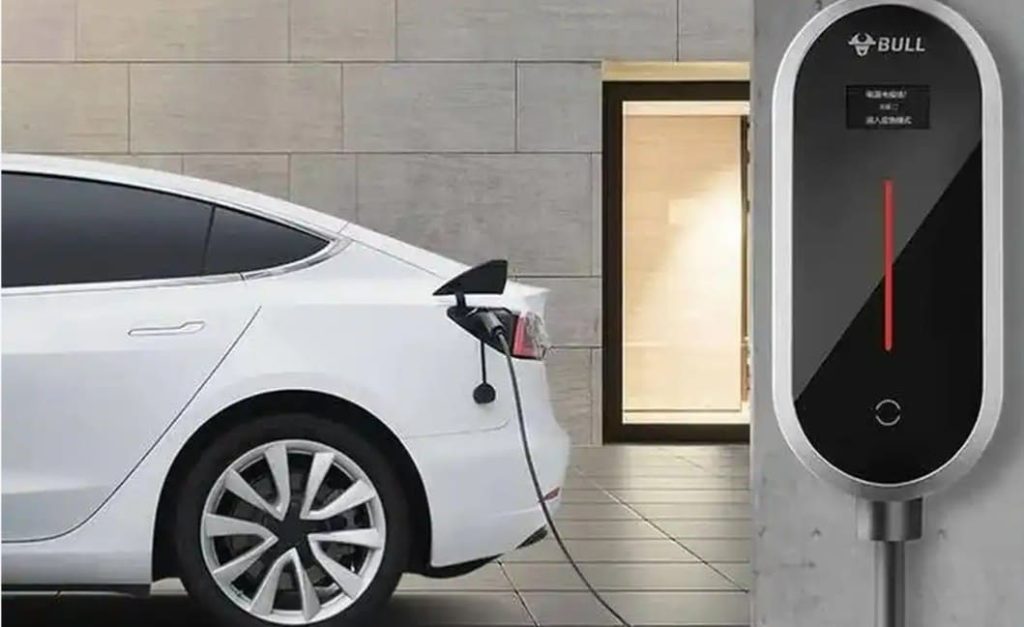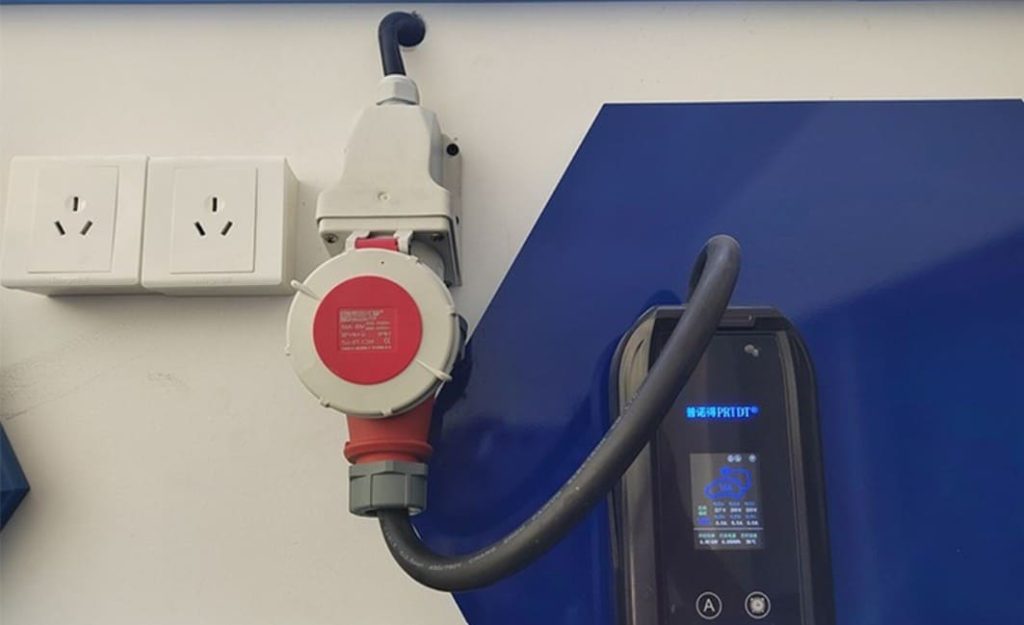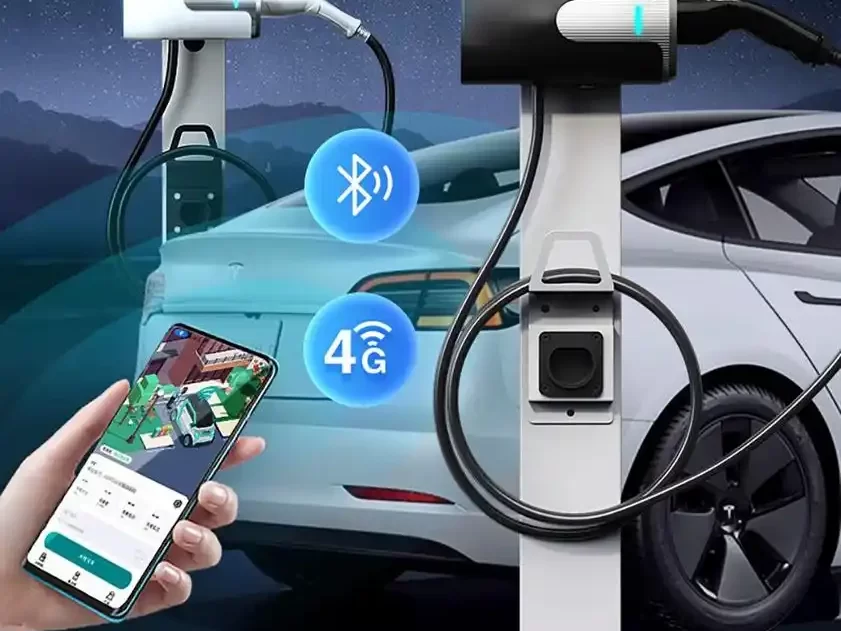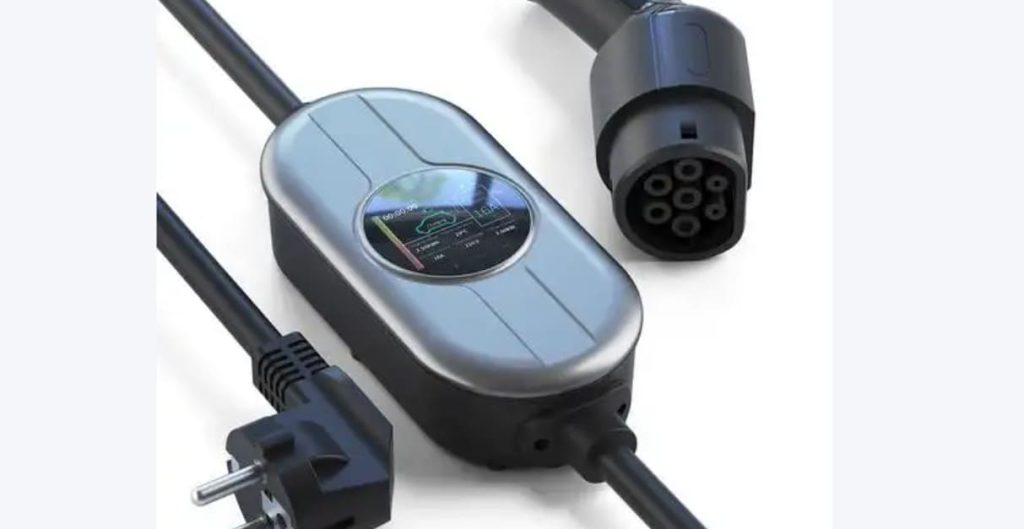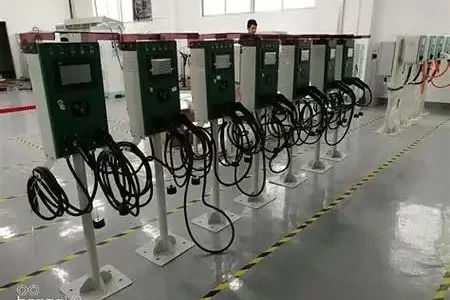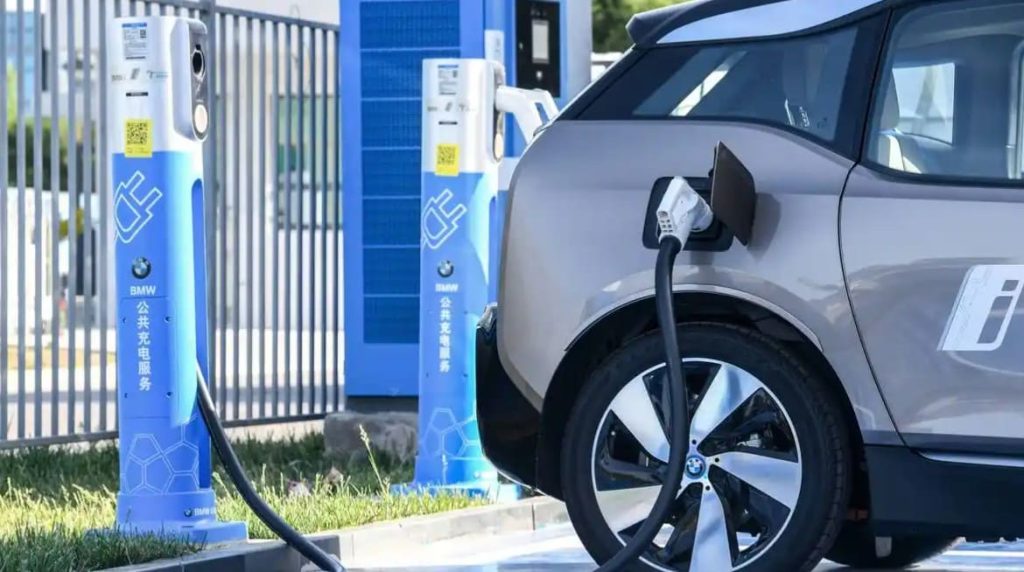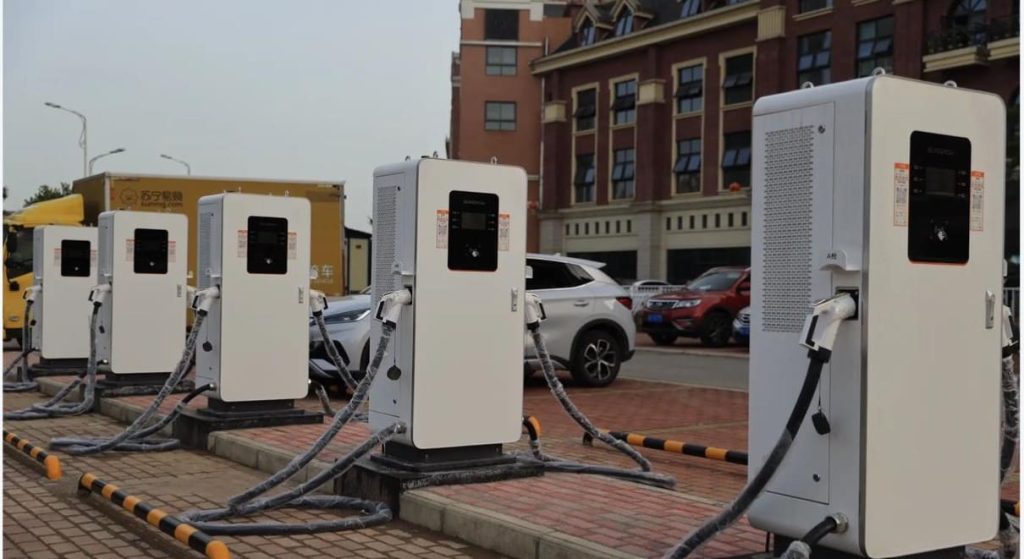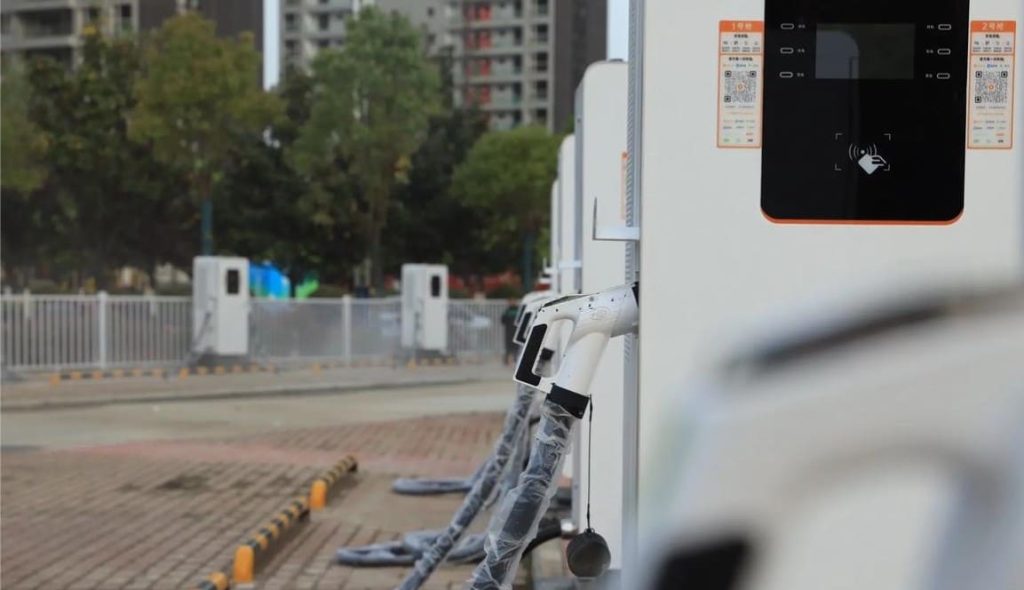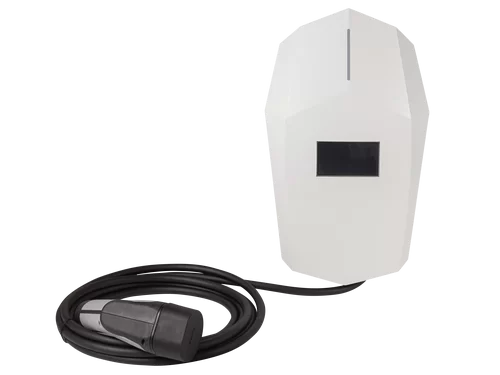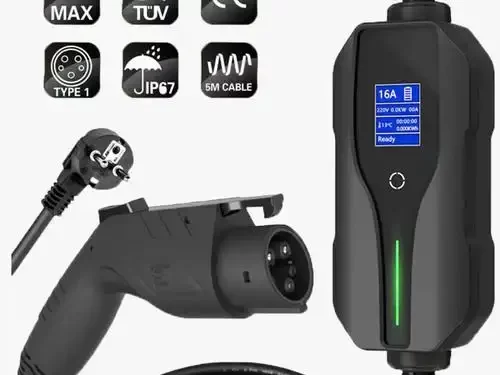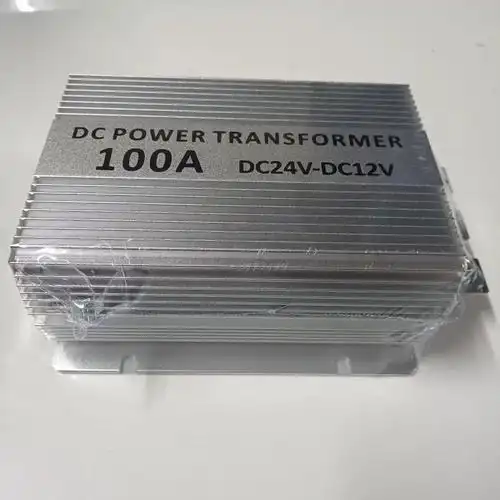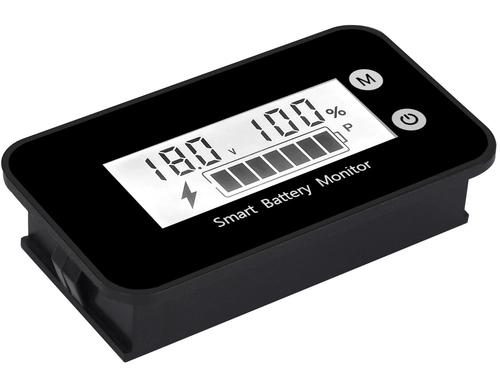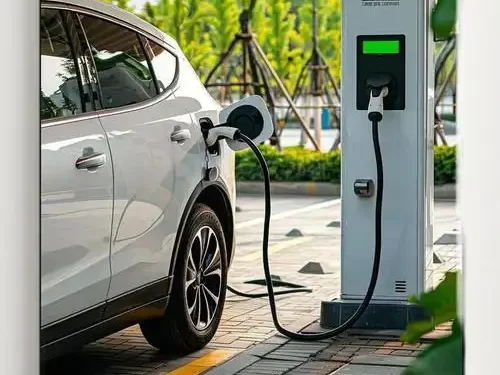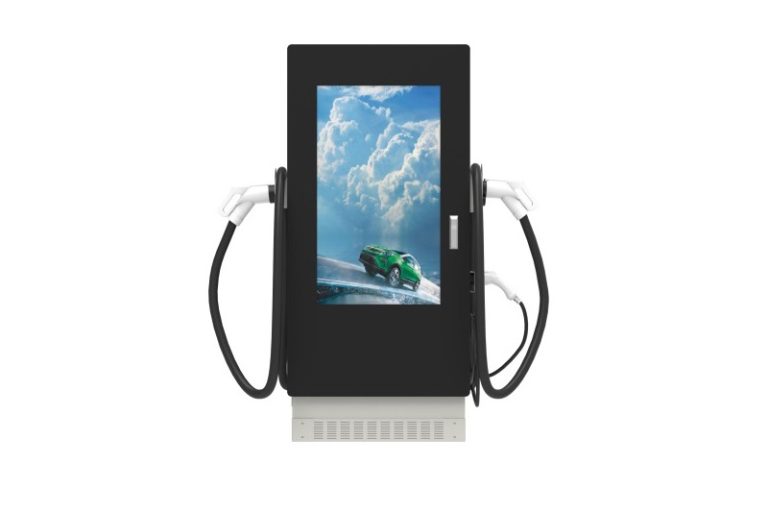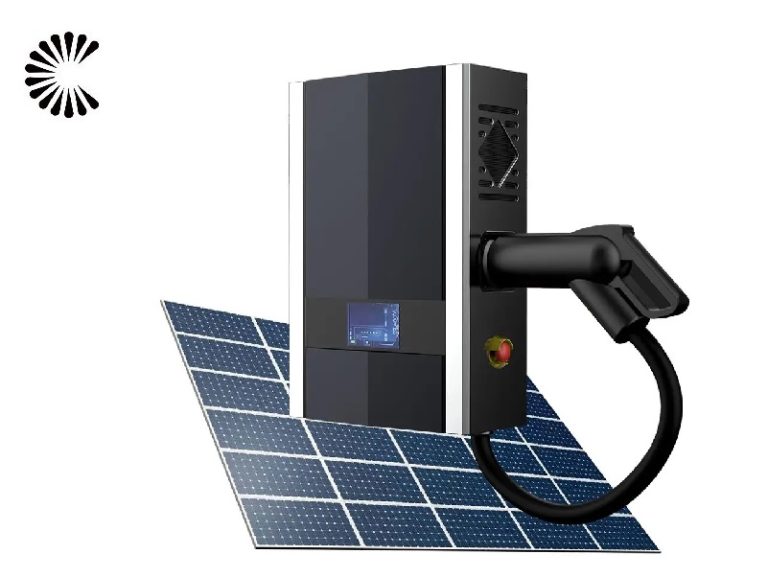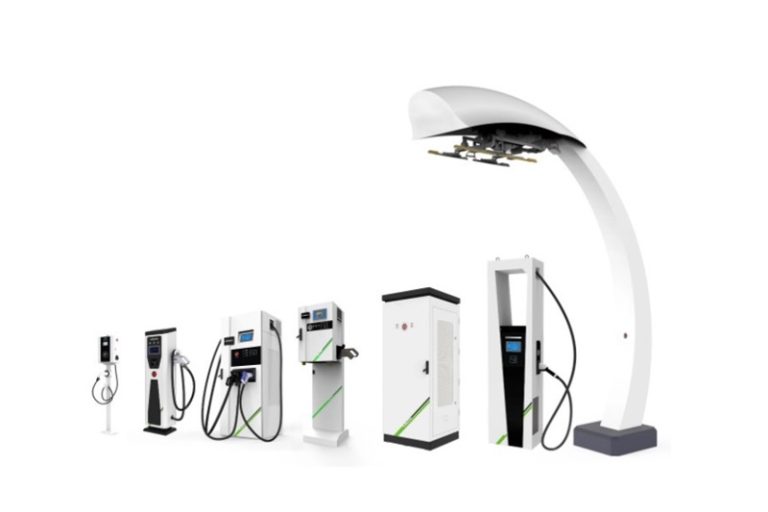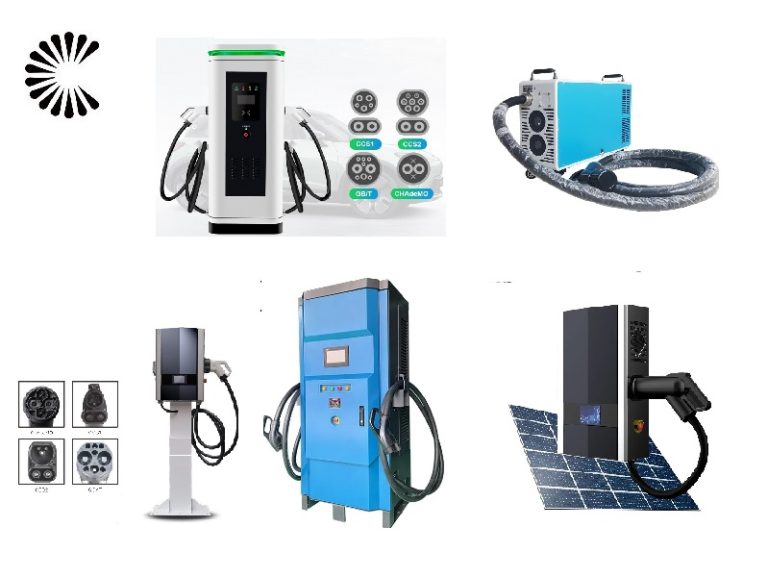11KW EV Charger
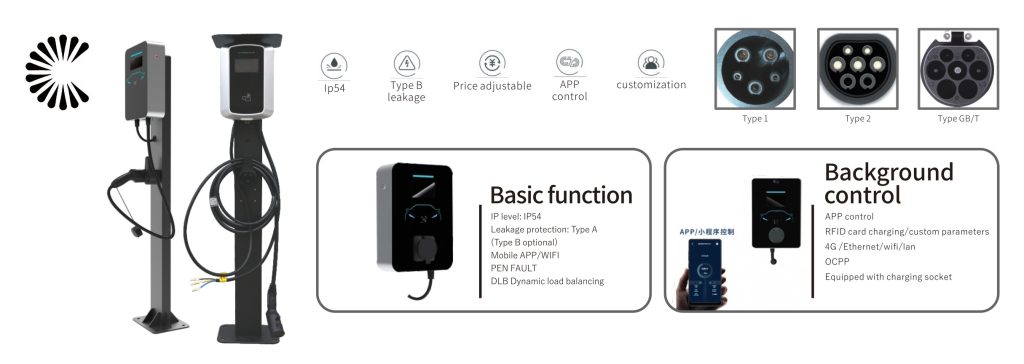
11KW EV Charger Wholesale Manufacturer In China
Electric Vehicles (EVs) have rapidly gained popularity as a sustainable and environmentally friendly mode of transportation. As the EV market continues to grow, the demand for efficient and high-powered charging solutions is paramount. The 11KW EV charger stands as a significant step forward in accelerating the adoption of EVs, offering faster and more convenient charging capabilities. In this article, we will delve into the features and benefits of the 11KW EV charger, shedding light on how it revolutionizes the charging experience for EV owners.
Specification of 11KW EV Charger
Appearance structure:
| ELECTRICAL SPECIFICATION | ||||
| Input Voltage/Output voltage | 400V(Three Phase) | |||
| Input frequency | 50/60Hz | |||
| Max. output power | 22kW(Three Phase) | |||
| Max. output current | 32A | |||
| WORKING ENVIRONMENT | ||||
| Protection degree | IP65 | |||
| Environment temperature | -25℃ ~ +55℃ | |||
| Relative humidity | 0-95% non-condensing | |||
| Maximum altitude | <2000m | |||
| Cooling | Natural air cooling | |||
| MOUNTING ACCESSORIES | ||||
| Wall-mounting bracket/Ground-mounting pole | Yes/Opt | |||
| PRODUCT MODEL(11kW) | GD4502-052 | GD4502-053 | GD4502-054 | GD4502-055 |
| Vision | Family | Operation | Family(socket) | Operation(socket) |
| APP/Ethernet/WIFI | Yes | Yes | Yes | Yes |
| 4G | Opt | Yes | Opt | Yes |
| RFID | Yes(with NFC) | |||
| LCD | 4.3-inch color display | |||
| RCD | Type A / Type B | |||
| LED Indicator light | Yes | |||
| Intelligent power adjustment | Yes | |||
Introduction of 11KW EV Charger
In the ever-evolving world of electric vehicles (EVs), technological advancements continue to push the boundaries of convenience and sustainability. Among these groundbreaking innovations is the 11KW EV charger, a significant step forward in the realm of electric mobility. This state-of-the-art charging solution promises to revolutionize the EV industry by enhancing charging efficiency, reducing charging times, and promoting widespread EV adoption.
Understanding the 11KW EV Charger
The 11KW EV charger refers to a charging station capable of delivering an impressive 11 kilowatts of power to an electric vehicle. This power rating defines the charging speed, indicating that the charger can supply up to 11,000 watts of electricity to the EV’s battery. Such high power output significantly accelerates the charging process, ensuring that EV owners spend less time waiting and more time driving.
Enhanced Charging Efficiency
One of the most compelling advantages of the 11KW EV charger lies in its enhanced charging efficiency. With a power rating of 11KW, it outperforms its lower-power counterparts, such as the standard 3.7KW or 7.4KW chargers. This improvement means that more energy is transferred to the EV’s battery in a shorter time, making the overall charging process more energy-efficient.
Reduced Charging Times
The 11KW EV charger’s ability to deliver higher power translates into remarkably reduced charging times for electric vehicles. Compared to traditional chargers, which might take several hours to charge an EV fully, the 11KW charger significantly cuts down the waiting time. For example, a battery with a capacity of 50 kilowatt-hours (kWh) could be charged from empty to full in approximately 4 to 5 hours with an 11KW charger, as opposed to 10 to 15 hours with a 3.7KW charger.
Flexibility and Versatility
Another aspect that sets the 11KW EV charger apart is its versatility. These charging stations can cater to various EV models, from compact city cars to larger SUVs, making it a suitable solution for a wide range of drivers. As EV battery capacities continue to grow, the 11KW charger is poised to accommodate future developments and provide consistent charging performance across different vehicle types.
Infrastructural Implications
The introduction and widespread adoption of 11KW EV chargers hold significant implications for the EV charging infrastructure. As these chargers become more prevalent, they will help alleviate concerns related to “range anxiety,” which refers to the fear of running out of charge on the road. With faster charging times, drivers can confidently plan longer journeys and rely on the expanding network of 11KW charging stations.
Environmental Impact
The proliferation of 11KW EV chargers aligns with global efforts to reduce greenhouse gas emissions and combat climate change. Electric vehicles, charged using renewable energy sources, significantly decrease carbon footprints compared to their gasoline-powered counterparts. By encouraging the adoption of electric mobility, the 11KW EV charger plays a crucial role in promoting a cleaner, greener, and sustainable transportation ecosystem.
Conclusion
The 11KW EV charger represents a pivotal advancement in electric vehicle charging technology, transforming the way we approach electric mobility. With enhanced charging efficiency, reduced charging times, and widespread compatibility, these charging stations are at the forefront of promoting EV adoption. As the world moves towards a more sustainable future, the 11KW EV charger stands as a beacon of progress, revolutionizing the way we power our vehicles and contributing to a cleaner planet for generations to come.

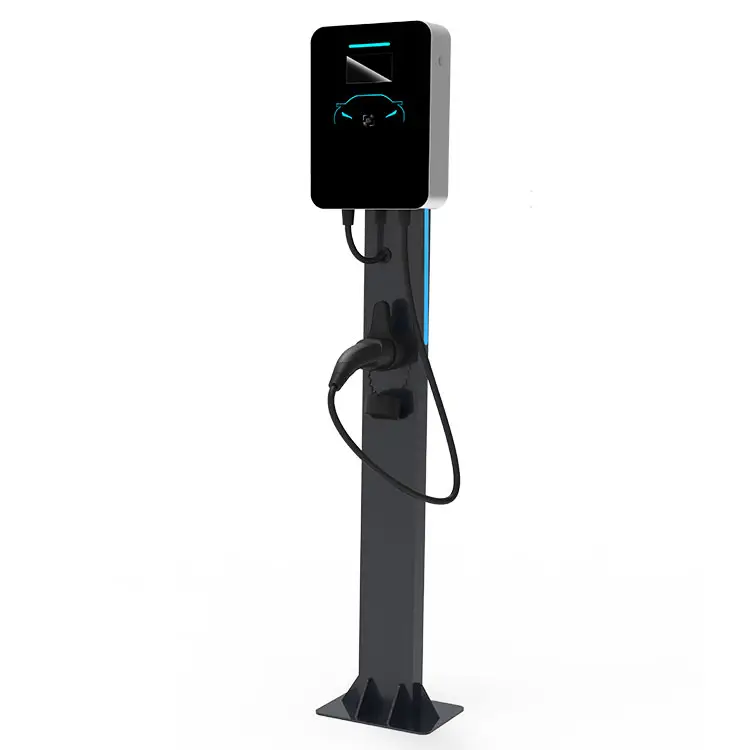

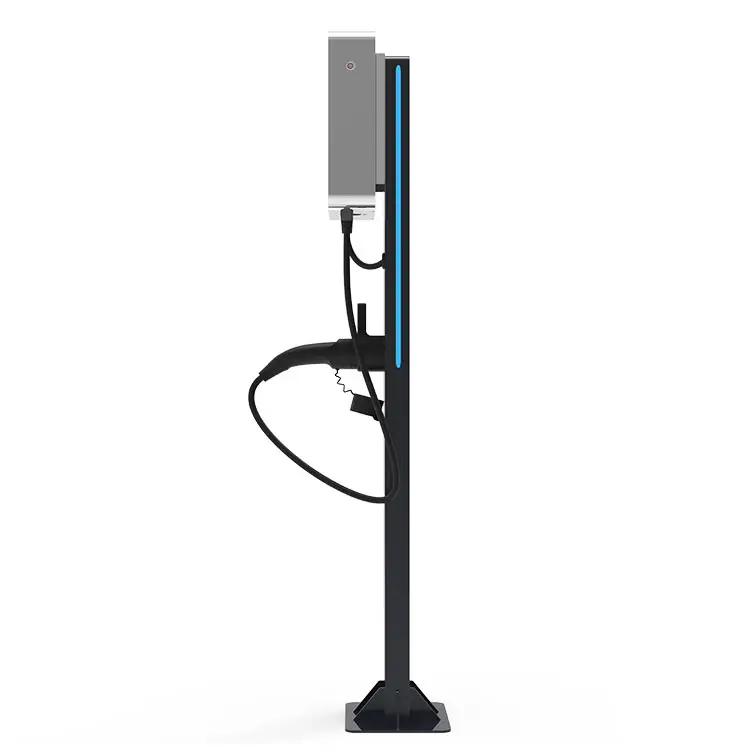


Advantages of 11KW EV Charger
| Business Type: | Manufacturer/Factory | Main Products: | EV Charger |
| Number of Employees: | 100 | Year of Establishment: | 2014.05 |
| Production Capacity | 5000Set/Year | After-sales Service: | Technical Support; on-line teach lessons |
| R&D Capacity: | ODM, OEM | Annual Output Value: | US$5 Million – US$10 Million |
| No. of R&D Staff: | 5 | No. of Production Lines: | 6 |
ChargersGO is a professional manufacturer for EV Charger. Our main product including slow charger, fast charger, DC EV Charger, AC EV Charger, commercial EV Charger, charger for home, EV charger level 1, level 2 and level 3 etc. All products in accordance with the China GMP design requirements. And also we have other certifications.
Business Philosophy
“Quality is the main policy of sales” and “integrity is the principle of success” are the business philosophy of our people. We carry out one-year warranty, lifelong maintenance service, with technical consultation and other services, and long-term supply of equipment. Welcome new and old customers to negotiate cooperation!
Small Machine Packing:
Retail Small EV Charger shipped with express.
Wsholesale Small EV Charger packed with export fumigation-free wooden cases, goes with bulk shipment or in container.
When packing small machines for sea shipment, it is important to take measures to ensure that the machines are protected from damage during transit. Here are some general steps that a manufacturer may follow when packing small machines for sea shipment:
- Clean and dry the charger: Before packing, the charger should be thoroughly cleaned and dried to prevent any moisture or debris from causing damage during transit.
- Disassemble the machine: If possible, the charger should be disassembled into its component parts to reduce its overall size and make it easier to pack.
- Wrap the charger in protective material: The charger should be wrapped in a layer of protective material, such as bubble wrap or foam, to protect it from scratches and impact during transit.
- Place the charger in a sturdy box: The wrapped charger should then be placed in a sturdy box that is appropriate for the size and weight of the machine. The box should be made of durable material, such as corrugated cardboard or plywood, and should be able to withstand the rigors of sea transit.
- Add packing material: The box should be filled with packing material, such as packing peanuts or air pillows, to provide cushioning and prevent the machine from shifting during transit.
- Seal the box: The box should be securely sealed with high-quality packing tape to prevent it from opening during transit.
- Label the box: The box should be clearly labeled with the charger’s name, weight, and any other relevant information, as well as the destination address and contact information.
Overall, the goal is to pack the small chargers in a way that will protect it from damage during transit and ensure that it arrives at its destination in good condition. It is important to follow proper packing procedures and use high-quality packing materials to minimize the risk of damage during sea shipment.
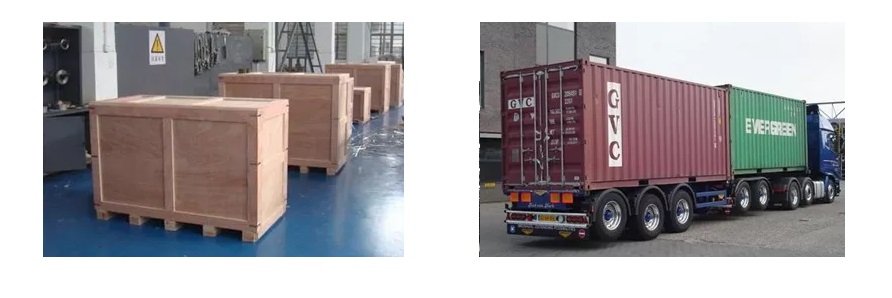
Large Machine Packing:
Packing a large machine for sea shipment can be a complex and challenging task. However, with careful planning and attention to detail, it is possible to pack a large machine for sea shipment in a way that will ensure that it arrives at its destination in good condition. Here are some general steps that a manufacturer may follow when packing up a large machine for sea shipment:
- Clean and prepare the machine: Before packing, the machine should be thoroughly cleaned and prepared. All fluids, such as oil or coolant, should be drained, and any loose or detachable parts should be removed.
- Disassemble the machine: If possible, the machine should be disassembled into its component parts to reduce its overall size and make it easier to pack. Each part should be carefully labeled and numbered to ensure that it can be easily reassembled at the destination.
- Protect delicate parts: Delicate or fragile parts should be wrapped in protective material, such as bubble wrap or foam, to protect them from damage during transit.
- Build a custom crate: A custom crate should be built around the machine to provide a secure and sturdy enclosure. The crate should be made of durable material, such as plywood, and should be designed to fit the machine snugly. The crate should also include braces or supports to prevent the machine from shifting during transit.
- Add cushioning material: The crate should be filled with cushioning material, such as packing peanuts or air pillows, to provide extra protection and prevent the machine from moving or shifting during transit.
- Securely fasten the machine: The machine should be securely fastened to the crate to prevent it from moving or shifting during transit. This may involve using straps, bolts, or other fasteners to hold the machine in place.
- Seal and label the crate: The crate should be securely sealed with high-quality packing tape, and should be clearly labeled with the machine’s name, weight, and any other relevant information. The destination address and contact information should also be clearly marked on the crate.
Overall, packing a large machine for sea shipment requires careful planning and attention to detail. It is important to use high-quality materials and follow proper packing procedures to ensure that the machine arrives at its destination in good condition. A professional packing and shipping company may be consulted to ensure that the machine is properly packed and prepared for sea shipment.
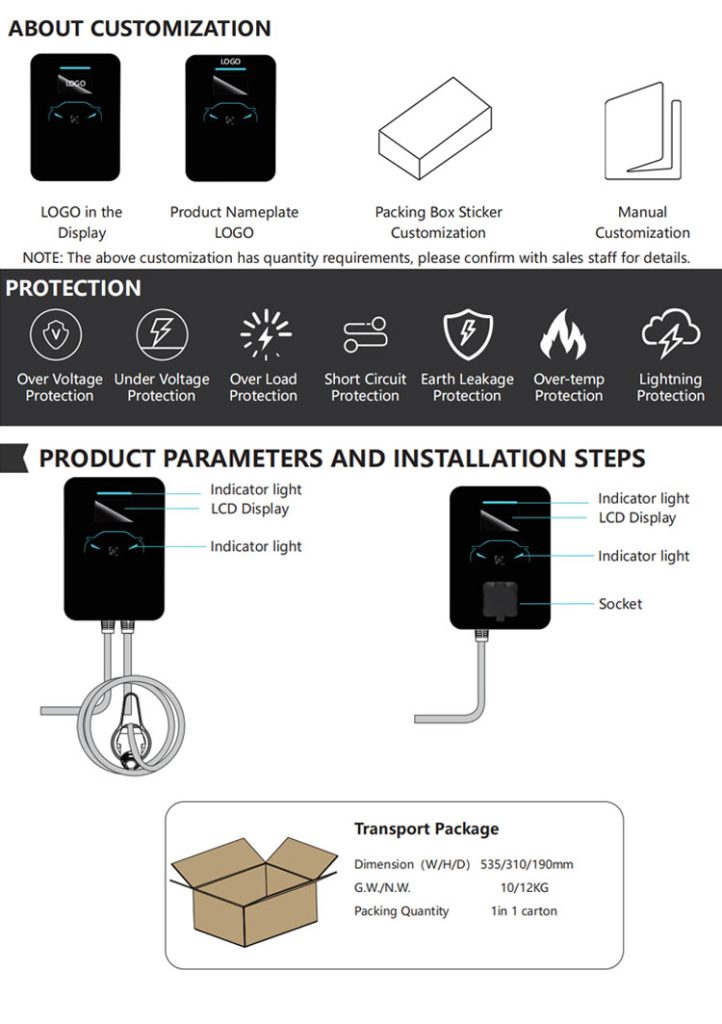


Related Products
Related Articles
Frequently Asked Questions(Click to see More FAQ)
Can you get an 11kW home charger?
To determine the amperage of an 11kW charger, we can use the formula:
Amperage (A) = Power (kW) / Voltage (V)
Given that the charger’s power rating is 11kW, we need to know the voltage at which it operates to calculate the amperage accurately.
If the charger operates at a standard voltage of 240 volts (common for many residential charging setups):
Amperage (A) = 11kW / 240V ≈ 45.83 amps
Therefore, an 11kW charger operating at 240 volts would draw approximately 45.83 amps to provide its maximum charging power to an electric vehicle.
How long to charge EV with 11kW?
The time it takes to charge an electric vehicle (EV) with an 11kW charger depends on the capacity of the EV’s battery and its current state of charge. To estimate the charging time, we can use the formula:
Charging time (hours) = Battery capacity (kWh) / Charging power (kW)
For example, if your EV has a battery capacity of 60 kilowatt-hours (kWh) and you are using an 11kW charger:
Charging time = 60 kWh / 11 kW ≈ 5.45 hours
So, with an 11kW charger, it would take approximately 5.45 hours to fully charge the 60 kWh battery. Keep in mind that charging times may vary slightly due to factors such as charging efficiency, battery condition, and the charging station’s actual power output. However, this estimation provides a good indication of the expected charging duration with an 11kW charger.
What is the difference between 11kW and 22 kW charger?
The primary difference between an 11kW and a 22kW charger lies in their charging power output. Charging power is measured in kilowatts (kW) and determines how quickly an electric vehicle (EV) can be charged. Here’s a breakdown of the key distinctions between the two:
Charging Speed:
The 11kW charger can supply up to 11 kilowatts of power to the EV’s battery.
The 22kW charger, on the other hand, delivers a higher power output, up to 22 kilowatts.
Charging Time:
Due to the higher power output, the 22kW charger can charge an EV faster than the 11kW charger. The exact difference in charging time depends on the battery capacity of the EV being charged.
For example, if an EV has a battery capacity of 50 kilowatt-hours (kWh), it could take around 4 to 5 hours to charge it fully with a 22kW charger, while the same process might take around 8 to 10 hours with an 11kW charger.
Infrastructural Requirements:
Installing a 22kW charger typically requires a more robust electrical infrastructure than an 11kW charger. This is because the 22kW charger demands a higher electricity supply and might necessitate more extensive wiring and electrical modifications to support its increased power needs.
Availability:
As of now, 11kW chargers are more common and widely available than 22kW chargers in public charging networks and residential settings. This is primarily because 11kW chargers are sufficient for many EV drivers and offer a good balance between charging speed and infrastructure requirements.
Suitability:
The choice between an 11kW and 22kW charger depends on the specific needs of the EV owner. For individuals who drive shorter distances and can leave their vehicles charging overnight, an 11kW charger may be adequate. In contrast, those who require faster charging times, have larger battery capacities, or frequently undertake longer journeys might prefer the faster charging capabilities of a 22kW charger.
In summary, the key difference between an 11kW and 22kW charger is the charging speed and the resulting charging time for the EV. The choice between the two depends on the user’s driving habits, charging requirements, and the availability of suitable electrical infrastructure. As EV technology continues to advance, more powerful chargers may become more widely available and accessible, further transforming the landscape of electric mobility.
How many amps is a 11kW charger?
To calculate the amperage of an 11kW charger, you need to know the voltage at which it operates. The formula to determine amperage is:
Amperage (A) = Power (kW) / Voltage (V)
For an 11kW charger, the amperage will vary based on the voltage it operates at. Common charging voltages for electric vehicles are 240 volts (for residential charging) and 400 volts (for public fast chargers).
If the charger operates at 240 volts:
Amperage (A) = 11kW / 240V ≈ 45.83 amps
Therefore, an 11kW charger operating at 240 volts would draw approximately 45.83 amps to provide its maximum charging power to an electric vehicle.
If the charger operates at 400 volts:
Amperage (A) = 11kW / 400V ≈ 27.5 amps
In this case, an 11kW charger operating at 400 volts would draw approximately 27.5 amps.
The amperage of the 11kW charger will depend on the voltage it is designed to operate with. It’s important to note that different chargers may be designed for specific voltage levels, so it’s essential to consider the electrical specifications of the charger and ensure compatibility with your electric vehicle and charging infrastructure.


